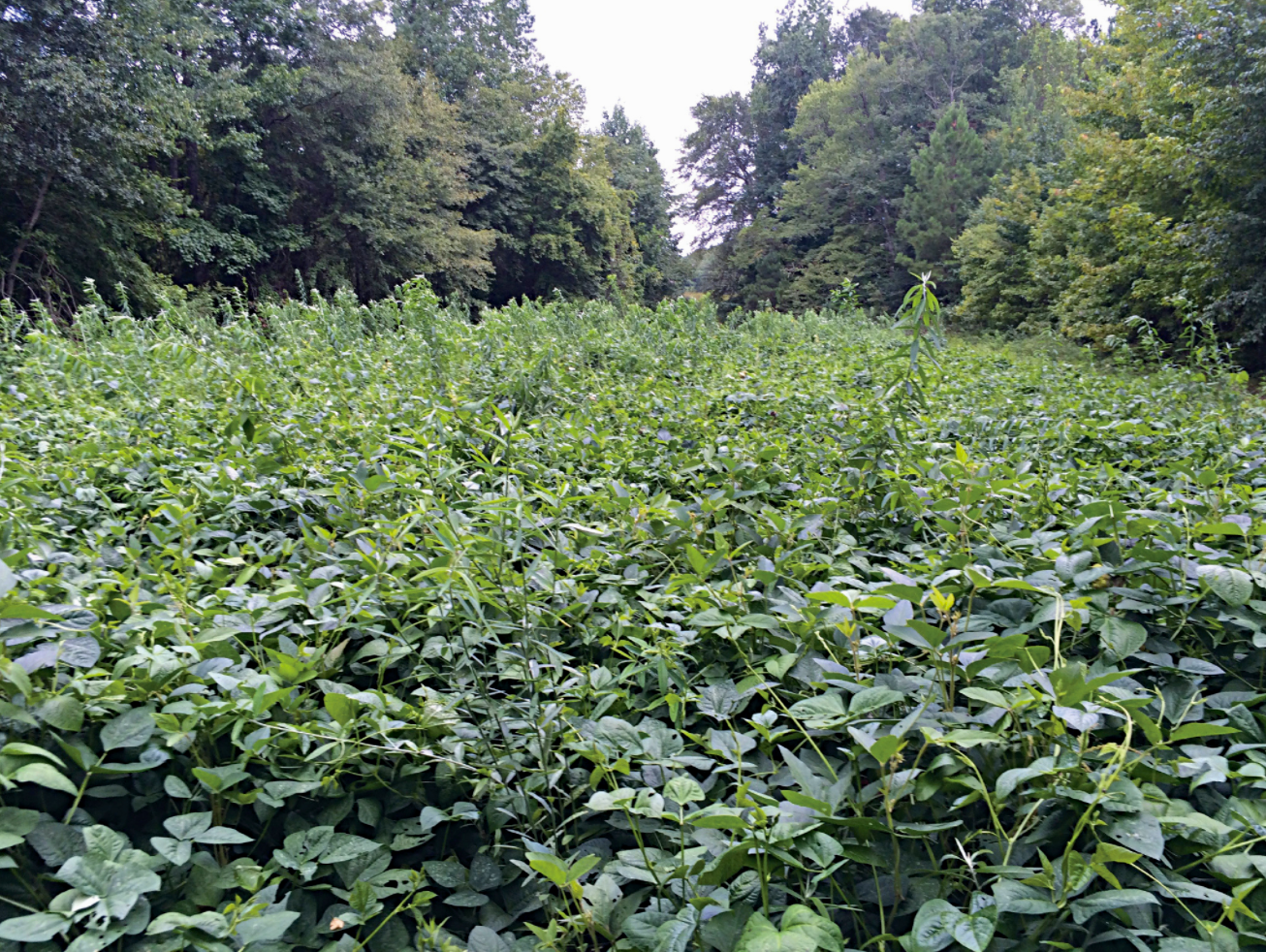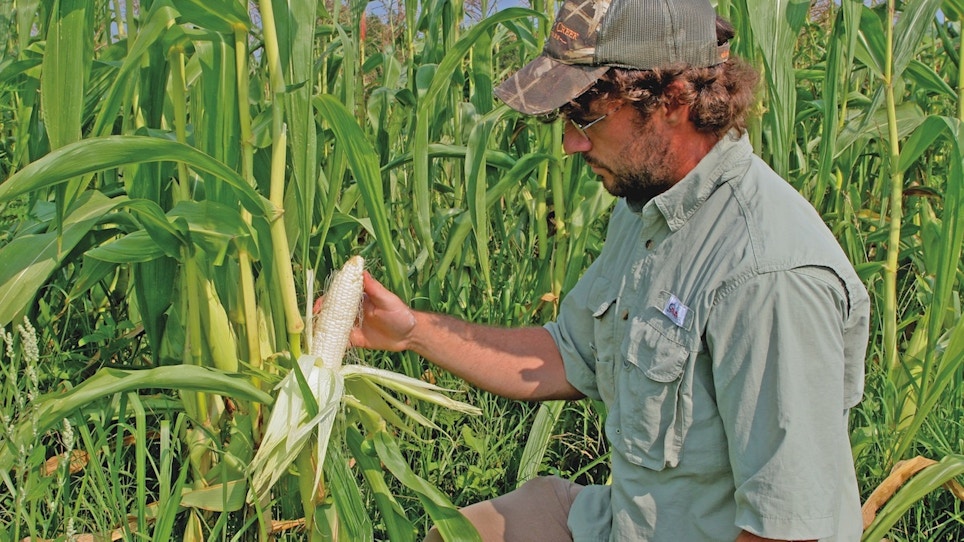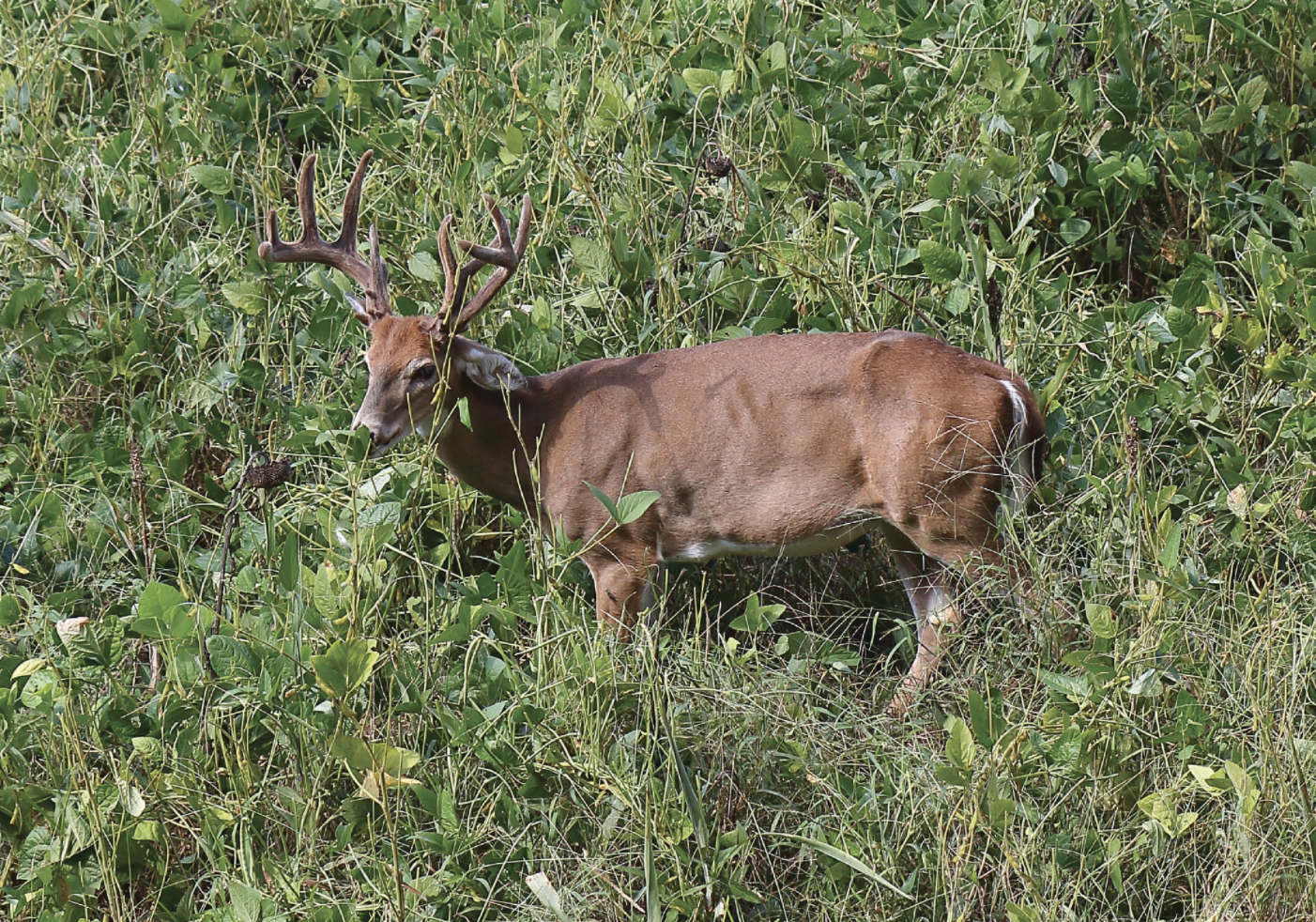Summer food plots may not put deer under our stands during hunting season like a field of turnips or clover can, but they do have a valid purpose. Summer nutrition plots can give whitetails abundant protein during the antler-growing and fawning season and they can provide high-quality forage on otherwise marginal land.
What To Plant
So what’s right for you? The good news is that virtually every commercially-available summer plot product has adequate nutrition. Even better, deer will eat them all. Some have higher levels of protein than others, of course. Lablab, for instance, has crude protein as high as 30 percent. Iron clay cowpeas and soybeans also have high levels of protein.
“Native forage may have lower protein levels, so it can be beneficial to provide plants with higher levels of protein. Basically, the higher protein plants will average out the plants with lower protein,” says Mississippi State University wildlife professor Dr. Steve Demarais.
Whether they have 16 percent or 30 percent crude protein, it’s usually a good idea to plant two or three different plants in a single food plot. Combining two types of plants can give your deer more tonnage per acre and it will provide them with more choices. Remember, deer don’t live on a single plant alone. Give them more choices and they are more likely to stay on or near your property.
“It’s not a bad idea to plant something like corn, sunflowers or grain sorghum and a climbing plant like peas or vining beans,” says Purdue University extension wildlife specialist Brian MacGowan. “The upright plants will serve as structure for the climbing plants so they are up off the ground and more available to deer.”
What’s more important, agree Demarais and MacGowan, is matching plants to soil types. Some plants just perform better than others in certain soil types. Although you can amend the pH level and nutrient level with lime and fertilizer, you can’t alter a soil’s ability to hold moisture or drain. Sandy soil, for instance, won’t hold moisture as well as heavier, clay-based soil. Sunflowers are fairly drought-tolerant. So are iron clay cowpeas and some varieties of soybeans.
“It can actually be better to buy seeds from your local farm supply store instead of buying generic seeds marketed for food plots because your farm supply store will have varieties suited for your region,” says MacGowan.
Demarais agrees. Not only do certain plants do better than others in different soil types, specific varieties can outperform others. A variety of beans, for instance, have been engineered in recent years for dry conditions.
“Ask local farmers which crops grow best in your local soil types. You may still need to amend the soil to get the proper pH and nutrients for your plants, which means you should get a soil test and follow the recommendations,” he adds. “Plants that have the proper pH and nutrients will be more attractive to deer and will provide better nutrition.”
Go Big
What you plant is important, but so is how much you plant. Small plots, anything less than an acre, may be fine in areas with extremely low deer densities. However, if you have lots of deer, you’ll need a pretty large food plot. That’s because deer don’t wait for plants to reach their maximum growth. And whitetails eat a lot in the summer. A 150-pound deer eats up to 10 pounds of forage per day.
In many cases, they will start nibbling on food plots soon after the plants break through the ground. Many summer nutrition plot plants, soybeans and sunflowers, for instance, won’t continue to grow if they’ve been topped off. That’s why MacGowan recommends at least two acres in areas with higher deer numbers. Five acres is even better.
“A good rule of thumb is that at least two or three percent of the habitat should be in food plots if you want to have an impact,” says Demarais. “Ideally, you want even more than that if your habitat is marginal to begin with.”
If you don’t have much space or you have lots of deer, consider plants that produce more tonnage—the total amount of plant matter. Soybeans are a good choice. So are most warm-season pea varieties. Lablab also produces lots of forage. Climbing plants combined with an upright plant, peas and sunflowers or climbing beans and sorghum, for example, will produce lots of food in smaller spaces. However, you still might need to build an exclusion fence to prevent deer from devouring your plots too soon.
Weed Management
No matter what you plant, you will have to deal with weeds. Every native plant on the landscape is attempting to produce their own seeds. That means the seed bank in your soil will sprout and grow within your summer plots. And that means you will need to control those unwanted plants. Remember, though, many of those plants we call weeds are the same ones deer have been eating long before anyone every thought about planting a food plot.
“Lots of native plants have very high protein levels and are excellent deer forage,” says MacGowan.
On the other hand, many aren’t. Grasses in particular can be troublesome. Johnson grass, orchard grass, foxtail millet and others can overtake a summer plot and rob the good plants of sunlight, moisture and nutrients. Lots of broadleafs can harm a food plot, too.

Certain plants do better than others in different soil types. Additionally, specific varieties can outperform others. A variety of beans, for instance, have been engineered in recent years for dry conditions.
A variety of herbicides can help control those unwanted plants. Selective herbicides like sethoxydim and clethodim kill grasses, but they won’t harm most broadleaf plants. Just remember that sorghum and corn are both grasses and may be killed if sprayed with a grass-specific herbicide.
Roundup Ready soybeans can be a good choice on sites with lots of troublesome weeds. Not only do genetically modified beans provide abundant high-quality forage, they withstand a shot of herbicide that will kill virtually every other plant.
Do They Help?
Even if you manage to knock back the weeds, it is important to have realistic expectations. If you plant summer plots with the goal of creating a herd brimming with heavy-antlered bucks, you might be disappointed.
It is true that a diet of high-quality food can produce noticeably larger antlers, but that is most obvious in a controlled environment. Deer in fenced enclosures only eat what is put in front of them. Free-range deer are entirely different.
“They don’t just stand in the middle of a food plot and eat all day like a cow. They eat hundreds of different types of plants throughout the year and they typically eat a wide variety of plants in a single day,” says MacGowan. “Food plots make up only a fraction of their daily diet.”
That’s why Demarais says you should also improve the rest of the habitat to provide as much native food as possible. Summer food plots only last so long.
“A food plot will make a difference to the deer, but those differences may not be visible to you,” says Demarais. “If larger antlers are your primary goal, you should also incorporate other management activities.”
Of the three factors that influence antler size (nutrition, genetics and age), the simplest one to control is age. By passing up young bucks, you automatically increase antler size. Four-year-old bucks typically have larger antlers than two-year-olds.
And remember, every management activity takes time. Planting a summer plot probably won’t result in noticeably larger antlers that fall. In order to have an impact on the health of your deer herd, it can take several years of providing high-quality food along with suitable habitat. In other words, if you are going to plant summer nutrition plots, plan on adding them to your yearly management plan for the rest of your deer hunting life.







